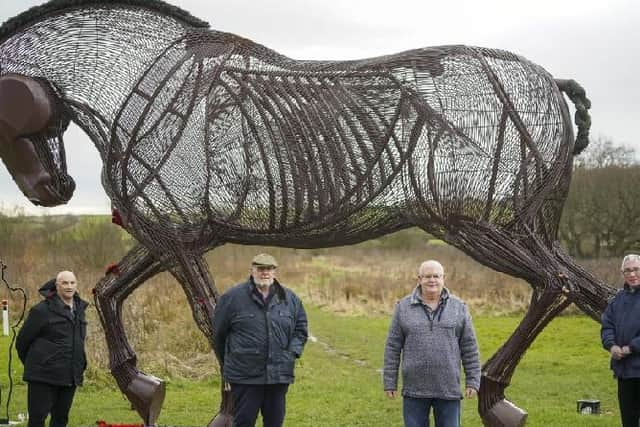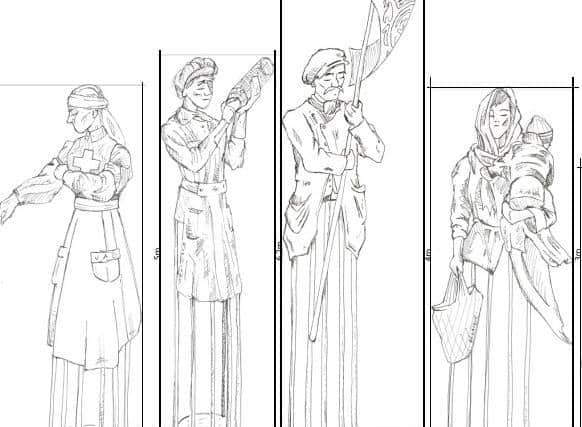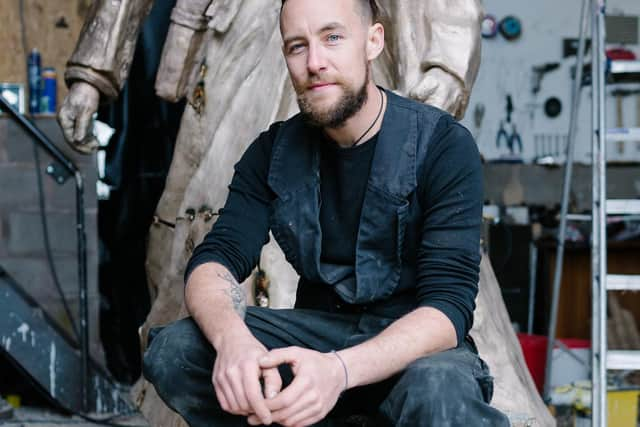New sculptures to be built near War Horse in Featherstone
and live on Freeview channel 276
Six new sculptures have been commissioned for Mill Pond Meadows to accompany the existing War Horse statue, and will recognise those who served in non-combat roles during the First World War.
‘Fighting From Home’ is Featherstone Town Council’s latest initiative, shining a light on the impact the war not just in the trenches in Europe, but on the home front.
Advertisement
Hide AdAdvertisement
Hide AdThe sculptures are being created by Midlands-based artist, Luke Perry.


The scheme also has the financial backing of Arts Council England which has awarded a grant towards the costs.
In recent years, Mill Pond Meadows became a commemorative site to mark 100 years since the end of The Great War.
As well as the War Horse sculpture, a woodland has been planted with 353 trees - one for each of the servicemen who lost their lives in battle.
Advertisement
Hide AdAdvertisement
Hide AdTown and district councillor, Margaret Isherwood, says the latest artwork will be a fitting accompaniment.


She said: “War Horse started back in 2014 and it all just grew from there.
“We looked at the site, which is such an important one for us as a town council, and we felt there was a need to develop it even further.
“The idea was, in a way, a homage to the people who were left behind during war, there were a lot of people affected who lived here.
Advertisement
Hide AdAdvertisement
Hide Ad“For that corner of the field, we thought something needed to be done so we decided to put it out there and see what sort of reaction we’d get.


“We interviewed Luke and we thought his ideas fitted so well with what we wanted.
“He is very much into social history and that came out in the figures he presented.
“Hopefully they will look magnificent when they are in place. We think they will look excellent and really complement the War Horse.
Advertisement
Hide AdAdvertisement
Hide Ad“The sort of public art we have here in Featherstone is all about the history of the town, and it’s the history that we need to get over to young people.”
The sculptures will include a series of figures in the shape of a coal worker, a munitions girl, a Voluntary Aid Detachment nurse, a refugee and a child.
The sixth sculpture represents the sense of loss.
They will be made of galvanised steel wire, similar to War Horse.
Raised up on stilt legs, the tallest will reach 6.2 metres high, with the shortest standing at 2.5 metres and positioned on the corner of the reserve where Wakefield Road meets Huntwick Lane.
Advertisement
Hide AdAdvertisement
Hide AdThey will arc around the corner at varying heights and taper towards War Horse.
With the pandemic hindering hopes of community engagement, particularly with local schoolchildren, artist Luke Perry and Featherstone Town Council put a seven-minute video together giving the reasons behind the new project.
Mayor Coun Steve Vickers said: “Luke has shown great versatility that has helped in his research and design development during the pandemic and has adapted superbly well to produce this remarkable first-class film.
“We are looking forward to seeing Luke’s artistic vision turned into a reality.”
Advertisement
Hide AdAdvertisement
Hide AdArtist Luke Perry, who is from near Dudley in the West Midlands, is a director at IHS, a not-for-profit company that looks to celebrate communities though public artwork.
He saw the job advertised and said he felt it had the potential to do “something significant”.
He said: “I think I proposed something that nobody else did. I suggested we look at artwork that it not really represented.
“More than 90 per cent of people in the world did not fight in the war, but they worked towards it.
Advertisement
Hide AdAdvertisement
Hide Ad“In Featherstone, what we have got is a huge history of non-combatants in the First World War, but those people you don’t see, they are such a big part of the town.
“What we are doing by representing them is shining a light on what happened so we can give a richer context to the history of Featherstone.
“As with almost every town in the Great War, Featherstone saw a lot of men go off to fight, but the majority of the people that lived there still contributed hugely to the war effort.
“We had the changing roles of women, loss, and of course, the coal mine. Everything was about the home life.
Advertisement
Hide AdAdvertisement
Hide Ad“There were huge amounts of Belgian refugees and there was the importance of the community in Featherstone supporting them, that happened a lot.”
Now that planning permission has been granted by Wakefield Council, Mr Perry says he will now be ordering the materials and will get to work on making the sculptures over the summer.